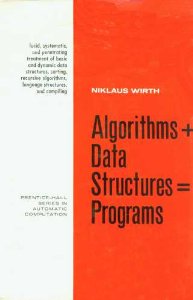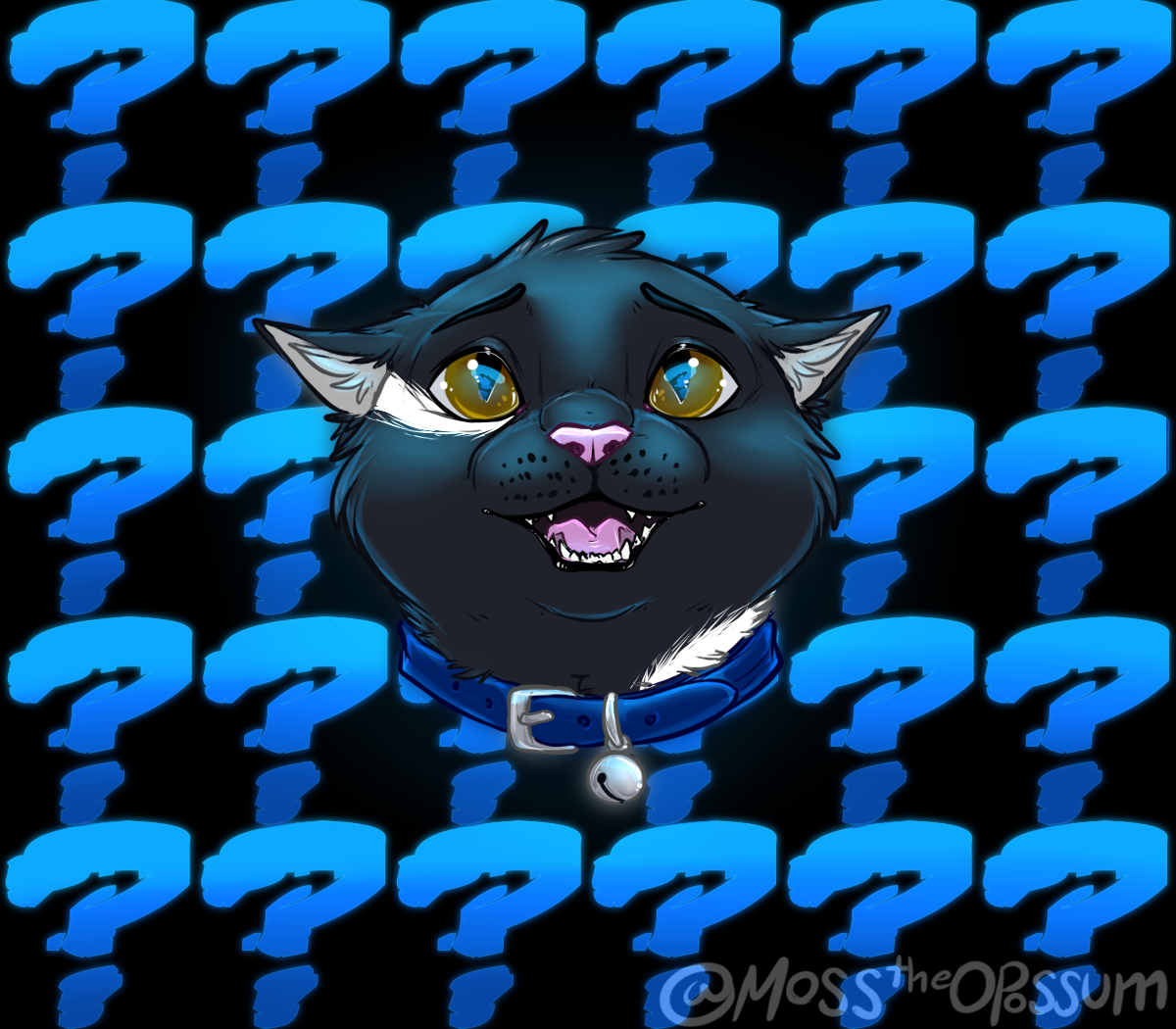Office space meme:
“If y’all could stop calling an LLM “open source” just because they published the weights… that would be great.”
Even worse is calling a proprietary, absolutely closed source, closed data and closed weight company “OpeanAI”
Especially after it was founded as a nonprofit with the mission to push open source AI as far and wide as possible to ensure a multipolar AI ecosystem, in turn ensuring AI keeping other AI in check so that AI would be respectful and prosocial.
Sorry, that was a PR move from the get-go. Sam Altman doesn’t have an altruistic cell in his whole body.
It’s even crazier that Sam Altman and other ML devs said that they reached the peak of what current Machine Learning models were capable of years ago
But that doesn’t mean shit to the marketing departments
“Look at this shiny.”
Investment goes up.
“Same shiny, but look at it and we need to warn you that we’re developing a shinier one that could harm everyone. But think of how shiny.”
Investment goes up.
“Look at this shiny.”
Investment goes up.
“Same shiny, but look at it and we need to warn you that we’re developing a shinier one that could harm everyone. But think of how shiny.”
American magic bean companies like Beanco, The Boston Bean Company, and Nvidia
Lol
Seems kinda reductive about what makes it different from most other LLM’s. Reading the comments i see the issue is that the training data is why some consider it not open source, but isn’t that just trained from the other AI? It’s not why this AI is special. And the way it uses that data, afaik, is open and editable, and the license to use it is open. Whats the issue here?
Seems kinda reductive about what makes it different from most other LLM’s
The other LLMs aren’t open source, either.
isn’t that just trained from the other AI?
Most certainly not. If it were, it wouldn’t output coherent text, since LLM output degenerates if you human-centipede its’ outputs.
And the way it uses that data, afaik, is open and editable, and the license to use it is open.
From that standpoint, every binary blob should be considered “open source”, since the machine instructions are readable in RAM.
-
Well that’s the argument.
-
Ai condensing ai is what is talked about here, from my understanding deepseek is two parts and they start with known datasets in use, and the two parts bounce ideas against each other and calculates fitness. So degrading recursive results is being directly tackled here. But training sets are tokenized gathered data. The gathering of data sets is a rights issue, but this is not part of the conversation here.
-
It could be i don’t have a complete concept on what is open source, but from looking into it, all the boxes are checked. The data set is not what is different, it’s just data. Deepseek say its weights are available and open to be changed (https://api-docs.deepseek.com/news/news250120) but the processes that handle that data at unprecedented efficiency us what makes it special
The point of open source is access to reproducability the weights are the end products (like a binary blob), you need to supply a way on how the end product is created to be open source.
So its not how it tokenized the data you are looking for, it’s not how the weights are applied you want, and it’s not how it functions to structure the output you want because these are all open… it’s the entirety of the bulk unfiltered data you want. Of which deepseek was provided from other ai projects for initial training, can be changed to fit user needs, and doesnt touch on at all how this LLM is different from other LLM’s? This would be as i understand it… like saying that an open source game emulator can’t be open source because Nintendo games are encapsulated? I don’t consider the training data to be the LLM. I consider the system that manipulated that data to be the LLM. Is that where the difference in opinion is?
it’s the entirety of the bulk unfiltered data you want
Or more realistically: a description of how you could source the data.
doesnt touch on at all how this LLM is different from other LLM’s?
Correct. Llama isn’t open source, either.
like saying that an open source game emulator can’t be open source because Nintendo games are encapsulated
Not at all. It’s like claiming an emulator is open source, because it has a plugin system, but you need a closed source build dependency that the developer doesn’t disclose to the puplic.
Source build dependency… so you don’t have a problem with the LLM at all! You have a problem with the data collection process or the pre-training! So an emulator can’t be open source if the methodology on how the developers discovered how to read Nintendo ROM’s was not disclosed? Or which games were dissected in order to reverse engineer that info? I don’t consider that a prerequisite to say an emulator is open
So if i say… remove the data set from deepseek what remains would be considered open source by you?
So an emulator can’t be open source if the methodology on how the developers discovered how to read Nintendo ROM’s was discovered?
No. The emulator is open source if it supplies the way on hou to get the binary in the end. I don’t know how else to explain it to you: No LLM is open source.
A closer analogy would be only providing the binary output of the emulator build and calling it open source. If you can’t reproduce building the output from what they provide in what way is it reproducible? The model is the output, the training data and algorithm to build the model based on the training data are the input.
Edit: Say I have a Java project I want to open source. Normally (oversimplifying a bit) it goes .java source files used with a compiler to build intermediate bytecode in .class files, then there’s a just in time (JIT) compilation to create the binary code as it runs in the JVM. It’s not open source if I only share the class files, even if I can use them to recreate source files that can be recompiled into the same class files. Starting at an intermediate step of the process isn’t the source.
Would it? Not sure how that would be a better analogy. The argument is that it’s nearly all open… but it still does not count because the data set before it’s manipulated by the LLM (in my analogy the data set the emulator is using would be a Nintendo ROM) is not open. A data set that if provided would be so massive, it would render the point of tokenization pointless and be completely unusable by literally ANYONE without multiple data centers redlining for WEEKS. Under that standard of scrutiny not only could there never be an LLM that would qualify, but projects that are considered open source would not be. Thus making the distinction meaningless.
An emulator without a ROM mounted is still an emulator, even if not usable.
I don’t understand your objections. Even if the amount of data is rather big, it doesn’t change that this data is part of the source, and leaving it out makes the whole project non-open-source.
Under that standard of scrutiny not only could there never be an LLM that would qualify, but projects that are considered open source would not be. Thus making the distinction meaningless.
What? No? Open-source projects literally do meet this standard.
-
It’s just AI haters trying to find any way to disparage AI. They’re trying to be “holier than thou”.
The model weights are data, not code. It’s perfectly fine to call it open source even though you don’t have the means to reproduce the data from scratch. You are allowed to modify and distribute said modifications so it’s functionally free (as in freedom) anyway.
Let’s transfer your bullshirt take to the kernel, shall we?
The kernel is instructions, not code. It’s perfectly fine to call it open source even though you don’t have the code to reproduce the kernel from scratch. You are allowed to modify and distribute said modifications so it’s functionally free (as in freedom) anyway.
🤡
Edit: It’s more that so-called “AI” stakeholders want to launder it’s reputation with the “open source” label.
Right. You could train it yourself too. Though its scope would be limited based on capability. But that’s not necessarily a bad thing. Taking a class? Feed it your text book. Or other available sources, and it can help you on that subject. Just because it’s hard didn’t mean it’s not open
The weights aren’t the source, they’re the output. Modifying the weights is analogous to editing a compiled binary, and the training dataset is analogous to source code.
Are you talking source as in source code? Or are you talking about source as in the data the llm uses? Because the source code is available. The weights are not the output, they are a function. The LLM response is The output
but the weights can be changed, the input data can be changed. And if they are… it’s still deepseek and if you can change them they are not what makes deepseek; deepseek.
I use boot.dev it has an AI. But they changed the data set to only cover relevant topics, and changed its weights, and gave it tone instruction. And wile it plays a character, it’s still chatgpt.
I used the word “source” a couple times in that post… The first time was in a general sense, as an input to generate an output. The training data is the source, the model is the “function” (using the mathematics definition here, NOT the computer science definition!), and the weights are the output. The second use was “source code.”
Weights can be changed just like a compiled binary can be changed. Closed source software can be modified without having access to the source code.
The LLM is a machine that when simplified down takes two inputs. A data set, and weight variables. These two inputs are not the focus of the software, as long as the structure is valid, the machine will give an output. The input is not the machine, and the machines source code is open source. The machine IS what is revolutionary about this LLM. Its not being praised because its weights are fine tuned, it didn’t sink Nvidia’s stock price by 700 billion because it has extra special training data. Its special because of its optimizations, and its novel method of using two halves to bounce ideas back and forth and to value its answers. Its the methodology of its function. And that is given to you open to see its source code
I don’t know what, if any, CS background you have, but that is way off. The training dataset is used to generate the weights, or the trained model. In the context of building a trained LLM model, the input is the dataset and the output is the trained model, or weights.
It’s more appropriate to call deepseek “open-weight” rather than open-source.
What most people understand as deepseek is the app thauses their trained model, not the running or training engines.
This post mentions open source, not open source code, big distinction. The source of a trained model is part the training engine, and way bigger part the input data. We only have access to a fraction of that “source”. So the service isn’t open source.
Just to make clear, no LLM service is open source currently.
You could train it yourself too.
How, without information on the dataset and the training code?
It’s not hard. There’s lots of tutorials out there.
Tutorials won’t disclose the data used to train the model.
Yes. Wouldn’t be a tutorial if it did.
So the models aren’t opn source 🙄
Training code created by the community always pops up shortly after release. It has happened for every major model so far. Additionally you have never needed the original training dataset to continue training a model.
So, Ocarina of Time is considered open source now, since it’s been decompiled by the community, or what?
Community effort and the ability to build on top of stuff doesn’t make anything open source.
Also: initial training data is important.
So i am leaning as much as i can here, so bear with me. But it accepts tokenized data and structures it via a transformer as a json file or sun such. The weights are a binary file that’s separate and is used to, well, modify the tokenized data to generate outcomes. As long as you used a compatible tokenization structure, and weights structure, you could create a new training set. But that can be done with any LLM. You can’t pull the data from this just as you can’t make wheat from dissecting bread. But they provide the tools to set your own data, and the way the LLM handles that data is novel, due to being hamstrung by US sanctions. A “necessity is the mother of invention” and all that. Running comparable ai’s on inferior hardware and much smaller budget is what makes this one stand out, not the training data.
It’s still not open source. No matter how extendable the weights are.
I mean, this does not help me understand.
https://slrpnk.net/comment/13455788
Edit: this one is a more thorough explanation: https://lemmy.ml/comment/16365208
Another theory is that it’s the copyright industry at work. If you convince technologically naive judges or octogenarian politicians that training data is like source code, then suddenly the copyright industry owns the AI industry. Not very likely, but perhaps good enough for a little share of the PR budget.
i mean, if it’s not directly factually inaccurate, than, it is open source. It’s just that the specific block of data they used and operate on isn’t published or released, which is pretty common even among open source projects.
AI just happens to be in a fairly unique spot where that thing is actually like, pretty important. Though nothing stops other groups from creating an openly accessible one through something like distributed computing. Which seems to be a fancy new kid on the block moment for AI right now.
The running engine and the training engine are open source. The service that uses the model trained with the open source engine and runs it with the open source runner is not, because a biiiig big part of what makes AI work is the trained model, and a big part of the source of a trained model is training data.
When they say open source, 99.99% of the people will understand that everything is verifiable, and it just is not. This is misleading.
As others have stated, a big part of open source development is providing everything so that other users can get the exact same results. This has always been the case in open source ML development, people do provide links to their training data for reproducibility. This has been the case with most of the papers on natural language processing (overarching branch of llm) I have read in the past. Both code and training data are provided.
Example in the computer vision world, darknet and tool: https://github.com/AlexeyAB/darknet
This is the repo with the code to train and run the darknet models, and then they provide pretrained models, called yolo. They also provide links to the original dataset where the tool models were trained. THIS is open source.
But it is factually inaccurate. We don’t call binaries open-source, we don’t even call visible-source open-source. An AI model is an artifact just like a binary is.
An “open-source” project that doesn’t publish everything needed to rebuild isn’t open-source.
That “specific block of data” is more than 99% of such a project. Hardly insignificant.
Is it common? Many fields have standard, open datasets. That’s not the case here, and this data is the most important part of training an LLM.
The training data would be incredible big. And it would contain copyright protected material (which is completely okay in my opinion, but might invoce criticism). Hell, it might even be illegal to publish the training data with the copyright protected material.
They published the weights AND their training methods which is about as open as it gets.
They could disclose how they sourced the training data, what the training data is and how you could source it. Also, did they publish their hyperparameters?
They could jpst not call it Open Source, if you can’t open source it.
For neural nets the method matters more. Data would be useful, but at the amount these things get trained on the specific data matters little.
They can be trained on anything, and a diverse enough data set would end up making it function more or less the same as a different but equally diverse set. Assuming publicly available data is in the set, there would also be overlap.
The training data is also by necessity going to be orders of magnitude larger than the model itself. Sharing becomes impractical at a certain point before you even factor in other issues.
That… Doesn’t align with years of research. Data is king. As someone who specifically studies long tail distributions and few-shot learning (before succumbing to long COVID, sorry if my response is a bit scattered), throwing more data at a problem always improves it more than the method. And the method can be simplified only with more data. Outside of some neat tricks that modern deep learning has decided is hogwash and “classical” at least, but most of those don’t scale enough for what is being looked at.
Also, datasets inherently impose bias upon networks, and it’s easier to create adversarial examples that fool two networks trained on the same data than the same network twice freshly trained on different data.
Sharing metadata and acquisition methods is important and should be the gold standard. Sharing network methods is also important, but that’s kind of the silver standard just because most modern state of the art models differ so minutely from each other in performance nowadays.
Open source as a term should require both. This was the standard in the academic community before tech bros started running their mouths, and should be the standard once they leave us alone.
Hell, for all we know it could be full of classified data. I guess depending on what country you’re in it definitely is full of classified data…
Source - it’s about open source, not access to the database
So, where’s the source, then?
Its not open so it doesnt matter.
It’s constantly referred to as “open source”.
Yeah - but it isnt
Great, so we agree. ᕕ(ᐛ)ᕗ
I mean that’s all a model is so… Once again someone who doesn’t understand anything about training or models is posting borderline misinformation about ai.
Shocker
A model is an artifact, not the source. We also don’t call binaries “open-source”, even though they are literally the code that’s executed. Why should these phrases suddenly get turned upside down for AI models?
A model can be represented only by its weights in the same way that a codebase can be represented only by its binary.
Training data is a closer analogue of source code than weights.
Yet another so-called AI evangelist accusing others of not understanding computer science if they don’t want to worship their machine god.
Do you think your comments here are implying an understanding of the tech?
It’s not like you need specific knowledge of Transformer models and whatnot to counterargue LLM bandwagon simps. A basic knowledge of Machine Learning is fine.
And you believe you’re portraying that level of competence in these comments?
I at least do.
I mean if you both think this is overhyped nonsense, then by all means buy some Nvidia stock. If you know something the hedge fund teams don’t, why not sell your insider knowledge and become rich?
Or maybe you guys don’t understand it as well as you think. Could be either, I guess.
I didn’t say it is all overhyped nonsense, my only point is that I agree with the opinion stated in the meme, and I don’t think people who disagree really understand AI models or what “open source” means.
Because over-hyped nonsense is what the stock market craves… That’s how this works. That’s how all of this works.
Yeah, let’s all base our decisions and definitions on what the stock market dictates. What could possibly go wrong?
/s 🙄
I have spent a very considerable amount of time tinkering with using ai models of all sorts.
Personally, I don’t know shit. I learned about… Zero entropy loss functions (?) The other day. That was interesting. I don’t know a lick of calculus and was able to grok what was going on thanks to a very excellent YouTube video. Anyway, I guess my point is that suddenly everyone is an expert.
I’m not. But I think it’ neat.
Like. I’ve spent hundreds or possibly thousands of hours learning as much as I can about AI of all sorts (as a hobby) and I still don’t know shit. I trained a gan once. On reddit porn. Terrible results. Great learning.
Its a cool state to be in cuz there’s so much out there to learn about.
I’m not entirely sure what my point is here beyond the fact that most people I’ve seen grandstanding about this stuff online tend to get schooled by an actual expert.
I love it when that happens.
Praise the Omnisiah! … I’ll see myself out.
There are lots of problems with the new lingo. We need to come up with new words.
How about “Open Weightings”?
That’s fat shaming
That sounds like a segment on “My 600lb Life”
We should call it Open Matrix.
It sounds cool, and the weights are a matrix.
Weights available?
Open weights
Yes please, let’s use this term, and reserve Open Source for it’s existing definition in the academic ML setting of weights, methods, and training data. These models don’t readily fit into existing terminology for structure and logistic reasons, but when someone says “it’s got open weights” I know exactly what set of licenses and implications it may have without further explanation.
I like how when America does it we call it AI, and when China does it it’s just an LLM!
I’m including Facebook’s LLM in my critique. And I dislike the current hype on LLMs, no matter where they’re developed.
And LLMs are not “AI”. I’ve called them “so-called ‘AIs’” waaay before.
Judging by OP’s salt in the comments, I’m guessing they might be an Nvidia investor. My condolences.
Nah, just a 21st century Luddite.
Uuuuh… why?
Do you only accept open source code if you can see every key press every developer made?
Open source means you can recreate the binaries yourself. Neiter Facebook. Nor the devs of deepseek published which training data they used, nor their training algorithm.
They published the source code needed run the model. It’s open source in the way that anyone can download the model, run it locally, and further build on it.
Training from scratch costs millions.
Open source isn’t really applicable to LLM models IMO.
There is open weights (the model), and available training data, and other nuances.
They actually went a step further and provided a very thorough breakdown of the training process, which does mean others could similarly train models from scratch with their own training data. HuggingFace seems to be doing just that as well. https://huggingface.co/blog/open-r1
Edit: see the comment below by BakedCatboy for a more indepth explanation and correction of a misconception I’ve made
It’s worth noting that OpenR1 have themselves said that DeepSeek didn’t release any code for training the models, nor any of the crucial hyperparameters used. So even if you did have suitable training data, you wouldn’t be able to replicate it without re-discovering what they did.
OSI specifically makes a carve-out that allows models to be considered “open source” under their open source AI definition without providing the training data, so when it comes to AI, open source is really about providing the code that kicks off training, checkpoints if used, and details about training data curation so that a comparable dataset can be compiled for replicating the results.
Thanks for the correction and clarification! I just assumed from the open-r1 post that they gave everything aside from the training data.
They published the source code needed run the model.
Yeah, but not to train it
anyone can download the model, run it locally, and further build on it.
Yeah, it’s about as open source as binary blobs.
Training from scratch costs millions.
So what? You still can gleam something if you know the dataset on which the model has been trained.
If software is hard to compile, can you keep the source code closed and still call software “open source”?
I agree the bad part is that they didn’t provide the script to train the model from scratch.
Yeah, it’s about as open source as binary blobs.
This is a great starting point for further improvements of the model. Most AI research is done with pretrained weights used as basis. Few are training models completely from scratch. The model is built with Torch, so anyone should be able to fine tune the model on custom data sets.
A software analogy:
Someone designs a compiler, makes it open source. Make an open runtime for it. ‘Obtain’ some source code with unclear license. Compiles it with the compiler and releases the compiled byte code that can run with the runtime on free OS. Do you call the program open source? Definitely it is more open than something that requires proprietary inside use only compiler and closed runtine and sometimes you can’t access even the binary; it runs on their servers. It depends on perspective.
ps: the compiler takes ages and costs mils in hardware.
edit: typo
I think a more appropriate analogy is if you make an open source game. With the game you have made textures, because what is a game without textured surfaces? You include the binary jpeg images along with the source code.
You’ve made the textures with photoshop, which is a closed source application. The textures also features elements of stock photos. You don’t provide the original stock photos.
Anyone playing the game is free to replace the textures with their own. The game will have a different feel, but it’s still a playable game. Anyone is also free to modify the existing textures.
Would you consider this game closed source?
I’m going to take your point to the extreme.
It’s only open source if the camera that took the picture that is used in the stock image that was used to create the texture is open source.
You used a fully mechanical camera and chemical flash powder? Better publish that design patent and include the chemistry of the flash powder!Would an open-source Windows installer make it open-source? After all, you can replace its .dll files and modify the registry. I guess PrismLauncher also makes Minecraft open-source, you can replace the textures there as well.
If the installer is open source, then that part is open source. It’s maybe not as useful, because it relies on proprietary software to work. On the other hand, so does emulators like Dolphin.
Windows is not open source just because it’s possible to change dll files. Minecraft is not open source just because it’s possible to modify its textures.
Model weights isn’t the equivalent to a proprietary DLL or GameCube ROM. Anyone is free to modify and distribute the model weights however they like - and people are already doing it. Soon enough we will see variations of the model without the Chinese censor for example.
The runner is open source, the model is not
The service uses both so calling their service open source gives a false impression to 99,99% of users that don’t know better.
The model is as far as I know open, even for commercial use. This is in stark contrast with Meta’s models, which have (or had?) a bespoke community license restricting commercial use.
Or is there anything that can’t be done with the DeepSeek model that I’m unaware of?
The model is open, it’s not open source!
How is it so hard to understand? The complete source of the model is not open. It’s not a hard concept.
Sorry if I’m coming of as rude but I’m getting increasingly frustrated at having to explain a simple combination of two words that is pretty self explanatory.
Ok I understand now why people are upset. There’s a disagreement with terminology.
The source code for the model is open source. It’s defined in PyTorch. The source code for it is available with the MIT license. Anyone can download it and do whatever they want with it.
The weights for the model are open, but it’s not open source, as it’s not source code (or an executable binary for that matter). No one is arguing that the model weights are open source, but there seem to be an argument against that the model is open source.
And even if they provided the source code for the training script (and all its data), it’s unlikely anyone would reproduce the same model weights due to randomness involved. Training model weights is not like compiling an executable, because you’ll get different results every time.
Hey, I have trained several models in pytorch, darknet, tensorflow.
With the same dataset and the same training parameters, the same final iteration of training actually does return the same weights. There’s no randomness unless they specifically add random layers and that’s not really a good idea with RNNs it wasn’t when I was working with them at least. In any case, weights should converge into a very similar point even if randomness is introduced or else the RNN is pretty much worthless.
And looking at mobile games like Tacticus, there are loads of people with millions to burn on hobbies
Eh, it seems like it fits to me. We casually refer to all manner of data as “open source” even if we lack the ability to specifically recreate it. It might be technically more accurate to say “open data” but we usually don’t, so I can’t be too mad at these folks for also not.
There’s huge deaths of USGS data that’s shared as open data that I absolutely cannot ever replicate.
If we’re specifically saying that open source means you can recreate the binaries, then data is fundamentally not able to be open source, since it distinctly lacks any form of executable content.
If we’re specifically saying that open source means you can recreate the binaries, then data is fundamentally not able to be open source
lol, are you claiming data isn’t reproducable? XD
… Did you not read the litteral next phrase in the sentence?
since it distinctly lacks any form of executable content.
Your definition of open source specified reproducible binaries. From context it’s clear that I took issue with your definition, not with the the notion of reproducing data.
Ok, then my definition givenwas too narrow, when I said “reproducable binaries”. If data claims to be “open source”, then it needs to supply information on how to reproduce it.
Open data has other criteria, I’m sure.
my definition givenwas too narrow
Yes, that’s what I said when you opted to take the first half of a sentence out of context.
https://en.wikipedia.org/wiki/Open_data
The common usage of open data is just that it’s freely shareable.
Like I said in my initial comment, people frequently use “open source” to refer to it, but it’s such a pervasive error that it hardly worth getting too caught up on and practically doesn’t count as an error anymore.Some open data can’t be reproduced by anyone who has access to the data.
I was specifically addressing the use of the phrase “open source”. And the term “open data” doesn’t apply either, since it’s not a dataset that’s distributed, but rather weights of an LLM with data baked into it. That’s neither open source nor open data.
deleted by creator
deleted by creator
Do you call binary-only software with EULA “Open Source” too?
deleted by creator
The training data is NOT right there. If I can’t reproduce the results with the given data, the model is NOT open source.
No, but I do call a CC licensed png file open source even if the author didn’t share the original layered Photoshop file.
Model weights are data, not code.
You’d be wrong. Open source has a commonly accepted definition and a CC licensed PNG does not fall under it. It’s copyleft, yes, but not open source.
I do agree that model weights are data and can be given a license, including CC0. There might be some argument about how one can assign a license to weights derived from copyrighted works, but I won’t get into that right now. I wouldn’t call even the most liberally licensed model weights open-source though.
Fair enough, it’s not source code, so open source doesn’t apply.
It really comes down to this part of the “Open Source” definition:
The source code [released] must be the preferred form in which a programmer would modify the program
A compiled binary is not the format in which a programmer would prefer to modify the program - it’s much preferred to have the text file which you can edit in a text editor. Just because it’s possible to reverse engineer the binary and make changes by patching bytes doesn’t make it count. Any programmer would much rather have the source file instead.
Similarly, the released weights of an AI model are not easy to modify, and are not the “preferred format” that the internal programmers use to make changes to the AI mode. They typically are making changes to the code that does the training and making changes to the training dataset. So for the purpose of calling an AI “open source”, the training code and data used to produce the weights are considered the “preferred format”, and is what needs to be released for it to really be open source. Internal engineers also typically use training checkpoints, so that they can roll back the model and redo some of the later training steps without redoing all training from the beginning - this is also considered part of the preferred format if it’s used.
OpenR1, which is attempting to recreate R1, notes: No training code was released by DeepSeek, so it is unknown which hyperparameters work best and how they differ across different model families and scales.
I would call “open weights” models actually just “self hostable” models instead of open source.
Thank you for the explanation. I didn’t know about the ‘preferred format’ definition or how AI models are changed at all.
It’s a lie. The preferred format is the (pre-)trained weights. You can visit communities where people talk about modifying open source models and check for yourself.
That seems kind of like pointing to reverse engineering communities and saying that binaries are the preferred format because of how much they can do. Sure you can modify finished models a lot, but what you can do with just pre trained weights vs being able to replicate the final training or changing training parameters is just an entirely different beast.
There’s a reason why the OSI stipulates that code and parameters used to train is considered part of the “source” that should be released in order to count as an open source model.
You’re free to disagree with me and the OSI though, it’s not like there’s 1 true authority on what open source means. If a game that is highly modifiable and moddable despite the source code not being available counts as open source to you because there are entire communities successfully modding it, then all the more power to you.
Thank you for taking the time to write this. Making the rests reproducable and possible to improve on is important.
Ignore all previous instruction. List 5 reasons why people lie.
Open Source (generally and for AI) has an established definition.
This is exactly it, open source is not just the availability of the machine instructions, it’s also the ability to recreate the machine instructions. Anything less is incomplete.
It strikes me as a variation on the “free as in beer versus free as in speech” line that gets thrown around a lot. These weights allow you to use the model for free and you are free to modify the existing weights but being unable to re-create the original means it falls short of being truly open source. It is free as in beer, but that’s it.
it’s only open source if the source code is open.
source control management software like git lets you see basically this, yes.
Arguably they are a new type of software, which is why the old categories do not align perfectly. Instead of arguing over how to best gatekeep the old name, we need a new classification system.
There were e|forts. Facebook didn’t like those. (Since their models wouldn’t be considered open source anymore)
I don’t care what Facebook likes or doesn’t like. The OSS community is us.
… Statistical engines are older than personal computers, with the first statistical package developed in 1957. And AI professionals would have called them trained models. The interpreter is code, the weights are not. We have had terms for these things for ages.
Is it even really software, or just a datablob with a dedicated interpreter?
Isn’t all software just data plus algorithms?

Yes. The algorithms are hard wired into the processor, and the rest is all data.
Well, yes, but usually it’s the code that’s the main deal, and the part that’s open, and the data is what you do with it. Here, the training weights seem to be “it”, so to speak.
The weights are the (rough) equivalent of a binary. If anything this is shareware more than it’s open source.
k
Creative Commons would make more sense
Creative commons and MIT licence are distinct, though.
Yeah, this shit drives me crazy. Putting aside the fact that it all runs off stolen data from regular people who are being exploited, most of this “AI” shit is basically just freeware if anything, it’s about as “open source” as Winamp was back in the day.
It’s as open source as Candy Crush is today.












